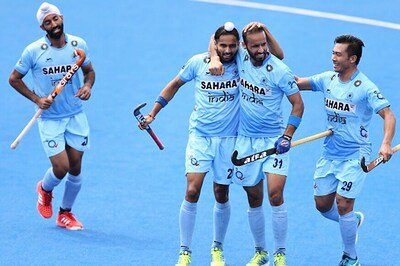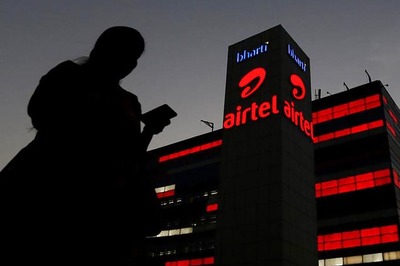
views
Chennai: The number of positive cases of the Covid-19 infection is on the rise, even as focus shifts from 'lockdown' to 'economic revival'.
Words like 'herd immunity' are being thrown around casually, but experts believe it's neither effective against the novel coronavirus nor a viable option for a country like India.
"If enough people have antibodies against an infection where transmission between people doesn't happen, that is called herd immunity," says Dr Pavithra Venkatagopalan, PhD in microbiology - coronavirus studies and director of Care Health Diagnostic Centre in Chennai.
"This can happen either by a natural course of infection, or via an immune-inducing system such as vaccines. For herd immunity to occur, if there are 100 people and 1 person has the infection and there are 2-3 others who are immunocompromised, you need the rest of them to have the antibodies so that the chance of transmission of this virus from that one person to the others who it will really affect is not there. It's not like we have learnt to live with it. We have learnt to accept that there are other infections around us; this is psychological. There is HIV, dengue, TB, malaria around us. These are scary infections and affect us. What sets apart all these infections is that we know some strategy to help reduce transmission."
The key concern about Covid-19 is that we don't have a vaccine just yet and we have no way of treatment, Dr Venkatagopalan says. "For you to have immunity, the antibody developed by your body after the infection has to be robust and neutralising. Robust means a lot of it, neutralising means it must be able to act effectively against the virus. Unfortunately, data as of now does not reveal that there is robust and neutralising immune response against this virus. So, as of today, the chance of herd immunity is not achievable. We still have to wait and see. There are a lot of questions about whether a person can be re-infected or not. Waiting for herd immunity is also eugenics-based because you're sacrificing lives of some people. Who are you to decide this other person can die vs not you?" she says.
Dr T Sundararaman, former dean of School of Health System Studies at the Tata Institute of Social Sciences, warns that herd immunity cannot be used as a strategy.
"There's a lot of confusion about herd immunity. It was never used in literature of epidemiology as a strategy. It is something that happens, not something you make happen. When you have movement, people will get infected, most people would recover. As more and more get infected, you reach a point when the epidemic cannot propagate. It's a phenomenon. Tamil Nadu's population is roughly 7-8 crores. If you need to stop propagation, you need 4 to 5 crores to get infected. We currently have around 10,000 cases," he says.
"By the time you reach 5 crores, even if you lose 1 per cent, it could be 5 lakh people dying, which is unacceptable."
Dr Pavithra agrees that moving out of lockdown now will add pressure on an already strained healthcare system. Both Dr Pavithra and Dr Sundararaman believe community transmission has been happening, especially in places like Chennai which is seeing rapid increases every day.
Why then are things opening up at this juncture? In short, there's no choice as it's practically impossible to be in lockdown till a vaccine arrives.
"Community transmission was there even in the first lockdown. But it's not an end-of-the-world scenario. It just means there are cases that come without a known contact and clusters can come in unexpected places. That's already happening. You're still going to do the same things of testing and isolation. The main purpose of a lockdown is not to prevent spread of infection completely. Very few countries and places have done that. What lockdown does is, it slows it down. You have a steady pace and identify clusters. When you lift lockdown, cases will increase and you must follow up chains of transmission," says Dr Sundararaman.
"Typically it must take the form of new clusters of infection. As long as you can pick it up early and act, you will be on top of the epidemic. But where a cluster will happen is not even 50 per cent predictable. It's like a cat-and-mouse game that the virus will play with you. A steady number of cases will come through the year, by when a vaccine would have come. Once you immunise everybody, then you can talk of herd immunity. It's easy to say vaccine will come, but it takes a lot of doing. As an intuitive thing, the government misprojected the lockdown. They did not explain adequately the flattening of curve is different from disease elimination. They built this story that we will contain the disease and it will not go into community transmission, implying to the people that numbers will actually decrease. You should have prepared the people by saying we are preparing the health system because when the lockdown is lifted, numbers will increase. They are saying it, but not saying it clearly to the public."
The only option left, as the public, in this situation is to maintain social-distancing norms.
"The economic situation of the people is such that they have to get back to work. All we can do is ensure that the social-distancing norms and masks are maintained. We have to take these things seriously because the infection has not gone anywhere. It's not like you can remove your face masks because the economy is opening up. Our new normal should entail the distancing, wearing face masks. I saw a meme: if two people are not wearing pants and urinate, it'll fall on each other. If one wears, it'll fall less on the other person. If both wear, it'll not fall. It's as simple as that," says Dr Pavithra.
The government, however, should focus more on isolation and testing, say experts. In simple terms, the more the tests, the better it is for the long run.
"Physical distancing reduces risks, but doesn't eliminate it. Testing and isolation is the key. Social distancing is second. It's an inefficient tool, it's being overprojected. It has a role and some benefits. The main benefit is it buys time for the healthcare system. I would be worried if no cases occur, it means you're possibly not reporting or testing properly. The current pattern of reporting in Tamil Nadu is not bad at all. I was worried when they were talking only of Tablighi Muslims. I thought they were messing it up. They failed to test around and then other clusters emerged," says Dr Sundararaman.
"There is a term called prevalence," explains Dr Pavithra. "We still don't know the prevalence of the infection, the number of people that have the infection in a population. We're such a huge country that we cannot test the entire prevalence of the infection. Only based on that we'll know about the spread; we still don't have that information. Antibody testing would have been easy to do on a mass population, but it's not completely reliable. Real-time PCR is extremely reliable but also expensive. The cost factor cannot be ignored. You still have to be careful with social-distancing norms; that message has to be louder and clearer."




















Comments
0 comment